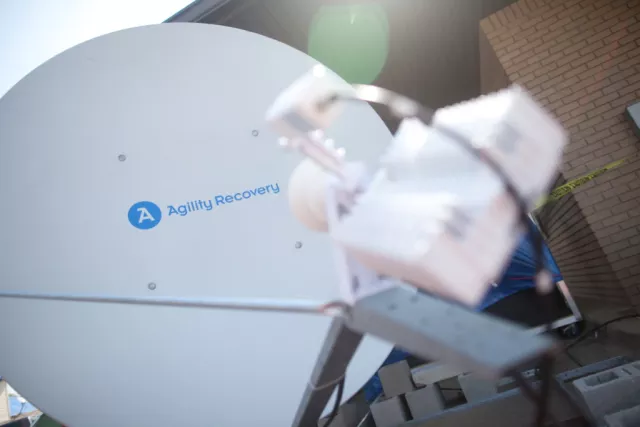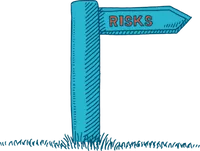Business Continuity Management: How to Develop an Effective Plan

As of July 2019, the average cost for a data breach for a U.S. company is $8.19 million. That average is up 1.5 percent since 2018 and over 12 percent in the past five years. That figure doesn’t even begin to cover the cost of lost business you will have in the future because of the data breach.
You may be thinking something like that could never happen to you because you’re too small of a company, or too careful with your data. You can never be too small of a company or have enough protection against computer hackers. Hackers can get behind any firewall you have if they target you.
The answer to data breaches and a host of other crisis business interruption events is business continuity management. Customers want it, and many company leaders need to know more about it. In its simplest terms, business continuity management (BCM) is an insurance policy against a high-impact crisis’ that can do immense damage to a company’s operations.
It’s true, events like data breaches have a considerable impact but may not happen tomorrow. A huge impact event may not happen to your company in the next decade. But if it does happen, are you ready for it?
Business Continuity vs. Business Continuity Management
Before going through business continuity planning steps, it’s essential to understand the difference between business continuity and business continuity management. Business continuity is your process or procedure that lays out and identifies any potential risks and threats to your organization. The process uses a formula to estimate the impact of these risks to your organization or business.
Then you provide a framework to handle the risk incident. This framework is what gives your company strength through preparedness and resilience. Business continuity management (BCM) takes your business continuity framework and consolidates it through a holistic process.
The holistic process identifies potential threats to the business and provides an effective and efficient response. It is the comprehensive process that safeguards the businesses’ key stakeholders, reputation, brand, and value-creating activities.
Business Continuity Return on Investment (ROI)
Sometimes businesses don’t incorporate business continuity steps to any robust business continuity program. That’s because the company’s return on investment (ROI) isn’t instantaneous. Not seeing a BCM’s ROI return on investment is a flawed way to think about BCM’s value.
BCM should never be put into an expense column of a business spreadsheet. Instead, it should be valued as a business asset. What’s more is there is an ROI that can be calculated using the cost of the business continuity program, a probability model of an impactful event, and the revenue that’s at risk when the event happens.
It’s that number the business stakeholders and executives need to be looking at because its an investment that does pay off. Business stakeholders and executives will give you a hundred different reasons why they don’t have the ROI number. But there are actionable items they can do to get ready and plan for what steps are needed for business continuity.
Business Continuity is About Addressing the Risk
Risk is the beginning, middle, and end of business continuity steps. That’s because BCM is all about calculating risks, what the event will cost you in real-time and dollars, and what you can do to prevent a massive disruption to your company when risk becomes a real-life event. Business stakeholders and executives gave the reasons for not having a BCM run from one extreme to the other, but the three most common reasons are:
- Companies will state they already know what to do in an emergency.
- Companies may also relay their insurance covers any of their losses.
- Many companies will tell you they don’t have time to develop a business continuity plan.
But companies with BCM have a plan and procedure for any emergencies. Companies with BCM also know insurance can begin to address all the financial losses you will be hit with during a high-impact risk event. Most of all, a company telling you they don’t have time to put together a business continuity plan is like a firefighter telling you they don’t have time to put on their protective clothing and equipment before running into a fire.
Business Continuity Plan Template
Every business continuity plan has steps and a rough template it can use to walk you through what your BCM should have and be ready to use if and when the time comes. The template begins with its first step—business impact analysis. It will determine everything in your company that has critical business functions or processes.
You want to know what in your company is time-sensitive and can’t have any delays. What resources will those business functions need to be supported in a crisis event? Your second step in the template is your business recovery.
What gap analysis has been done to identify and address the gaps your company will incur? What recovery requirements and strategies have you put together to address any gaps or concerns after a significant impact crisis? Your third step on the template is plan development.
Your plan development will be able to document manual workarounds and organize recovery teams for relocation plans. Your fourth and final step is one of testing and exercises. This is when you do mock high-impact crisis events and test your manual walkarounds, your relocation plans, and more.
Once you’re able to evaluate the recovery strategies, you can fix any holes you still see or finalize your plans to be implemented when needed.
Business Continuity Management
Business continuity management is more than a framework that enables your company to keep operating during a high-impact crisis event like a data breach. BCM allows you to operate your business without your customers feeling they’ve been forgotten or ignored. Your company can seamlessly keep functioning if they invest in a BCM plan that keeps them operational, functional, and providing what their customers or clients need.
Your company’s ROI of business continuity can’t always be analyzed and given back to you in a number. But your ROI of business continuity can protect your company’s integrity, competence, and seamless day-to-day operations while everyone around you is trying to scramble and get their company functional again. When you want decades of experience that’s gone through a multitude of recoveries with top-tiered software and services, Agility Recovery can help.
When you’re ready to be proactive and a leader in BCM, just like you’ve been in your industry, reach out to us. It’s not always about taking the path most traveled. Many business leaders forge their path.
That’s what we work with you on step by step.



